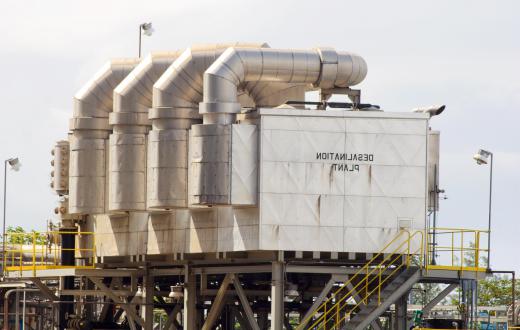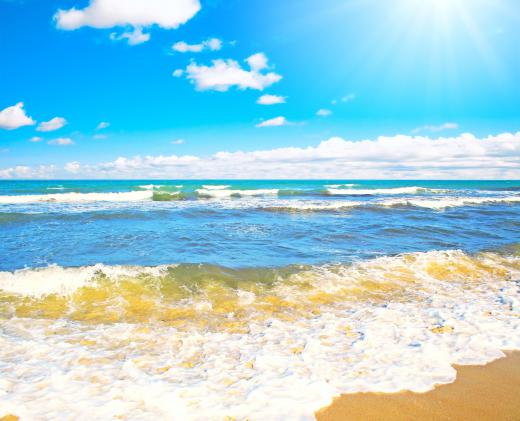What Is Membrane Distillation?
Membrane distillation is a process that is used to separate or purify liquids. The technology works by creating a gradient of temperatures across the membrane, with one side being warmer and the other side cooler. Vapors rising from the warmed liquid pass through the membrane to the cooler area of lower pressure, where they condense into a purified form of the liquid. This type of distillation has applications in industrial plants, where certain liquids must be separated out from a mixture, and in desalination plants, where fresh water must be obtained from saltwater.
When a liquid is warmed, it eventually begins to evaporate or boil. Heat causes the molecules of the liquid to gain energy, and they rise in a vaporous state. An example of this is the steam that rises from hot water.

In membrane distillation, the vapor is contained in a chamber and rises in pressure, forcing the molecules through a porous medium — the membrane. The type of membrane that is used in this distillation process allows only the vapor to pass through, eliminating other impurities. After the vapor passes through the membrane, it encounters a cool area or surface that causes it to condense back into a liquid state. The resultant liquid consists only of the molecules that were in the vapor, and any salt or other non-evaporated impurities are still in the original mixture.

A few types of membrane distillation processes exist. Direct-contact membrane distillation, which is commonly used in desalination, keeps the cooling solution in contact with the far side of the membrane. Air-gap membrane distillation separates the coolant from the membrane by a gap and a hard surface on which the vapor can condense. Other types of processes, such as sweep-gas and vacuum membrane distillation, actively pull vapor through the membrane using a gas or vacuum. These latter techniques are useful for removing undesirable compounds from the original mixture.
The uses of membrane distillation are diverse. It can be used to remove salt and other mineral impurities from water, but it also is useful in removing specific chemicals or creating concentrated mixtures for industrial or commercial use. As the vapor distills through the membrane, it is removed from the original mixture, making that original mixture more concentrated.
Membrane distillation has become a desirable solution for desalination because it requires a relatively low amount of energy to operate. It can be run by solar heat or waste heat from other operations. The small amount of heat that is required for the process makes it a possible solution for creating small-scale plants in remote areas that might not have access to extensive power resources.
AS FEATURED ON:
AS FEATURED ON:












Discuss this Article
Post your comments